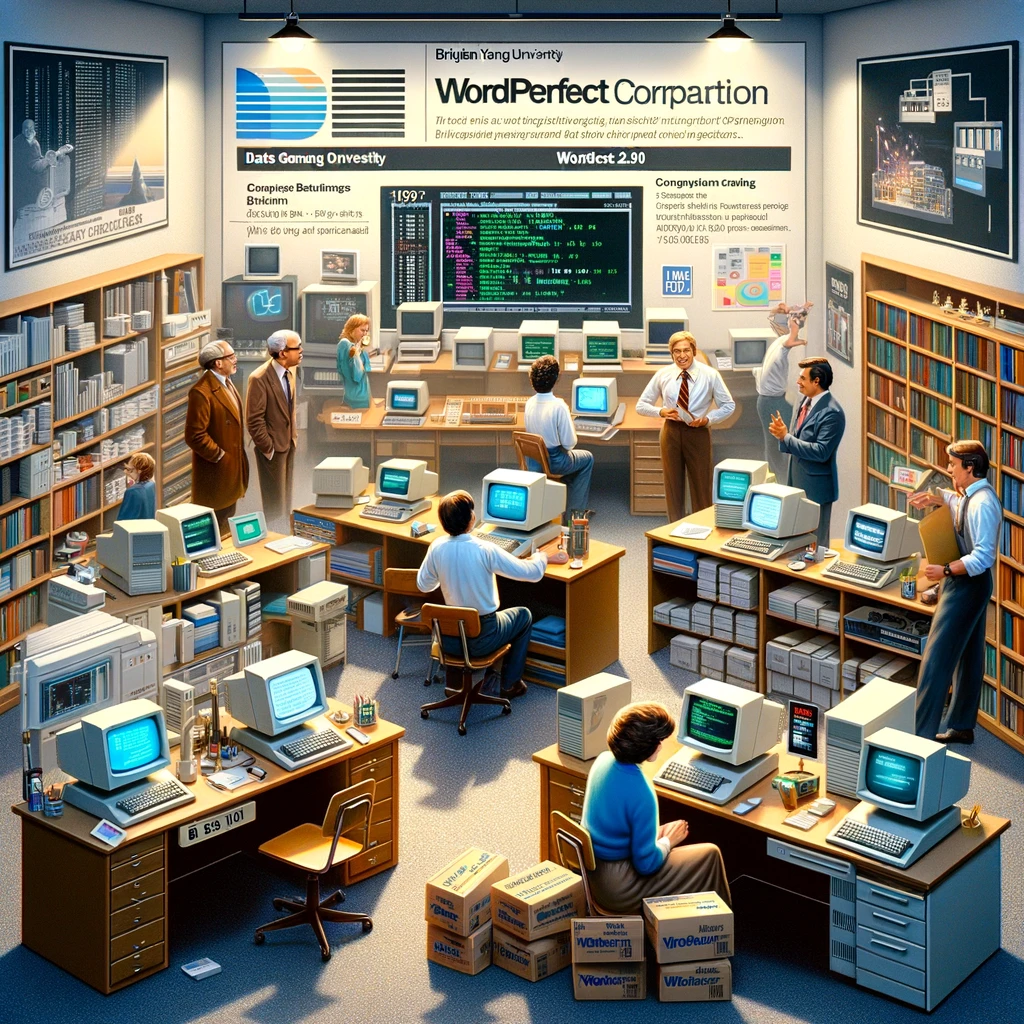Reading time: 11 minutes.

Why Project Management Matters
In software development, project management is the secret sauce that makes everything click. A good project manager brings order, keeps everyone on the same page, and makes sure things get done right. Let’s break down what a project manager does and why they’re so important for developer teams.
What Does a Project Manager Do?
Think of a project manager as the coach of a sports team. They plan, organize, and make sure everyone knows their role. Here’s a closer look at their main jobs:
Planning and Organizing: They set goals, figure out what needs to be done, and map out the steps to get there. They also decide who does what and when, making sure everything runs smoothly.
Team Coordination: They keep the team working together like a well-oiled machine. They assign tasks, offer help when needed, and make sure everyone is aiming for the same target. This teamwork boosts productivity.
Risk Management: They spot potential problems before they become big issues. By keeping an eye on progress and tackling obstacles early, they keep the project on track.
Stakeholder Management: They act as the go-between for the team and the clients. They gather requirements, manage expectations, and keep everyone updated. This ensures the project meets the client’s needs.
Why Developer Teams Need a Project Manager
Having a project manager on board brings a bunch of perks that can make or break a project. Here’s how they help:
Boosted Productivity: They streamline the workflow, making sure tasks are assigned properly, deadlines are met, and resources are used wisely. This lets developers focus on coding without distractions, leading to higher productivity.
Clear Communication: Good communication is key, and project managers excel at it. They ensure everyone understands the requirements, shares updates, and incorporates feedback. This prevents misunderstandings and keeps the project moving forward.
Smart Resource Use: They know how to play to each team member’s strengths. By assigning tasks based on individual skills, they prevent burnout and make sure everyone is working efficiently.
Risk Reduction: With their knack for spotting issues early, project managers can nip problems in the bud. This proactive approach keeps the project on schedule and within budget.
Quality Control: They enforce quality checks to make sure the software meets the required standards. Regular reviews and testing ensure high-quality deliverables.
By appreciating the role of project management, developer teams can enjoy smoother workflows, better communication, and successful project outcomes. A skilled project manager can be the difference between a project that flops and one that flies, leading to happier clients and a more satisfied team (Altexsoft).
Must-Have Project Management Tools
Managing projects in developer teams can be a wild ride, but the right tools can make it smooth sailing. These tools help keep everything on track, boost teamwork, and get projects done right. Two big names in the software world are Jira and Confluence.
Jira for Software Teams
Jira is like the Swiss Army knife for software teams. It’s packed with features for tracking issues, planning sprints, managing backlogs, and more. Using Jira, you can keep your development tasks organized and under control.
One of the coolest things about Jira is how it handles backlog management. You can prioritize tasks based on your project roadmap, document requirements, and keep everything tidy. With Scrum templates, Jira makes it easy to refine backlogs, prioritize tasks, map dependencies, and optimize resources.
Jira also shines in project tracking and reporting. It gives you real-time insights and agile metrics, so you can keep an eye on development speed, cycle time, and other key performance indicators. These insights help you fine-tune your project delivery and keep your team on track.
Confluence for Sprint Retrospectives
Confluence is like the ultimate team notebook. It’s a central hub for collaboration, especially handy for sprint retrospectives and capturing feedback for future improvements.
With Confluence, you can easily gather customer feedback and share insights from sprint retrospectives. It provides a structured space where team members can pitch in their thoughts and ideas, promoting a culture of continuous improvement. By documenting feedback in Confluence, you ensure that valuable insights are preserved and can be referenced later.
Both Jira and Confluence are top picks in the software development world, and using them together can make project management a breeze. Jira handles tasks like issue tracking, sprint planning, and backlog management, while Confluence is perfect for sprint retrospectives and feedback capture. Together, they boost collaboration, improve communication, and ramp up your team’s productivity.
Remember, the best project management tools for you depend on your team’s needs and preferences. Explore different options, think about what your team needs, and pick the tools that fit your project management goals.
Nailing Down What You Need: The Requirements Gathering Process
When you’re building software, getting the requirements right is like laying the foundation for a house. If it’s shaky, the whole thing can come crashing down. So, let’s talk about how to gather those requirements like a pro.
Steps to Get It Right
Here’s a no-nonsense guide to gathering requirements:
Assign Roles: First things first, make sure everyone on your team knows what they’re supposed to do. This keeps things running smoothly and avoids any “I thought you were doing that” moments.
Meet with Stakeholders: Chat with the folks who care about the project. This could be your users, clients, or anyone else with skin in the game. These meetings are gold mines for understanding what people really want (Asana).
Gather and Document Info: Use tools like questionnaires, use case scenarios, mind maps, and prototypes to get the info you need. These methods help you dig out the real needs, even when people aren’t sure what they want themselves (Asana).
List Assumptions and Requirements: Write down everything you’ve gathered in a clear way. Note any assumptions you made because these can affect how the project turns out. Be specific about what needs to be done to hit your goals.
Get Approval from Stakeholders: Once you’ve got everything documented, get the thumbs-up from your stakeholders. This makes sure everyone is on the same page about what the project is supposed to achieve. Keep talking to them throughout the project to avoid any surprises.
Monitor Progress: Keep an eye on how things are going. Regularly check and update the requirements as needed. This helps you stay on track and make sure the requirements are still relevant.
Why Stakeholders Matter
Stakeholders are your project’s lifeline. Their input shapes the project’s goals, success criteria, and any tweaks that need to be made. By involving them from the get-go, you get a clearer picture of what they need and expect, which makes them happier in the long run (Asana).
Getting stakeholders involved early and often can make or break your project. Their feedback helps you avoid misunderstandings and keeps everyone aligned, which boosts your chances of success.
By following these steps and keeping your stakeholders in the loop, you’ll set the stage for a project that’s well-defined and more likely to succeed. For more on why project management is crucial in software development, check out our article on the importance of project management in software development.
Effective Communication in Development
Effective communication is the secret sauce of successful software development projects. It’s what keeps developers, testers, designers, and project managers on the same page, boosting productivity and delivering top-notch software (Moldstud).
Why Communication Matters
When team members don’t communicate well, mistakes happen. Misunderstandings can lead to errors and rework, which is why clear communication is crucial. It helps clarify requirements and prevents costly slip-ups. By keeping communication lines open, everyone stays aligned with the project’s goals and objectives.
Good communication also means developers can engage effectively with stakeholders like clients, end-users, and project sponsors. Regular updates and feedback sessions build trust and ensure everyone’s needs are met. This collaboration not only improves the software’s quality but also helps manage expectations and address any concerns or changes quickly.
Project managers need effective communication to relay changes in requirements, deadlines, and priorities to the team. Clear communication helps manage expectations, keeps everyone informed, and ensures the project hits its milestones on time (Moldstud).
Tools to Boost Collaboration
Several tools can help developer teams communicate and collaborate better. These tools make information sharing easier, promote transparency, and improve overall team efficiency.
One popular tool is Jira. It’s a project management tool designed for software teams. Jira helps teams track tasks, manage workflows, and collaborate on projects in an organized way. With features like issue tracking, agile boards, and customizable workflows, Jira makes it easy for teams to communicate, prioritize tasks, and stay on top of project progress. Check out our article on Jira for Software Teams for more details.
Another great tool is Confluence. It’s a knowledge management and collaboration platform that’s perfect for sprint retrospectives. Confluence lets teams document and share project information, capture meeting notes, and collaborate on documentation. With Confluence, teams can easily access important project info, reflect on past sprints, and identify areas for improvement. Learn more about Confluence in our article on Confluence for Sprint Retrospectives.
Using these communication and collaboration tools, developer teams can work more efficiently, improve project outcomes, and foster a culture of effective communication. Remember, good communication is the key to successful project management in software development.
Project Management Challenges
Even with solid project management practices, developer teams often hit a few bumps along the way. Two big hurdles that can trip up a project are managing scope creep and setting clear goals and success criteria.
Scope Creep Management
Scope creep is when project requirements start to balloon beyond the original plan, leading to higher costs, delayed timelines, and potential conflicts. In 2017, a survey found that 52% of project teams dealt with scope creep (Kissflow).
To keep scope creep in check, it’s key to get clients involved early during the planning phase. This means setting clear expectations, documenting project requirements, and having a change management process in place. By getting stakeholders on the same page from the get-go, you can cut down on last-minute changes during the project.
A change control process is a must for handling scope changes. This should include a formal system for evaluating change requests, assessing their impact on the project’s timeline and budget, and getting approval from the right folks before making any changes. By keeping a tight grip on scope changes, you can stay focused and avoid unnecessary detours.
Clear Goals and Success Criteria
Not having clear goals and success criteria can really mess with project management. Without clear objectives, teams can lose direction and struggle to prioritize tasks. About 39% of projects fail because they lack a project plan and clear goals (Kissflow).
To tackle this, project managers should use goal-setting methods like SMART (Specific, Measurable, Achievable, Relevant, and Time-bound) and CLEAR (Collaborative, Limited, Emotional, Appreciable, and Refinable). These frameworks help set effective goals from the start, ensuring they are specific, measurable, attainable, relevant, time-bound, and aligned with the project’s overall objectives.
Defining clear success criteria is also crucial to see if the project has hit its targets. These criteria should be measurable and in line with the project goals. Regularly reviewing and communicating these success criteria with the team and stakeholders helps keep everyone focused and on the same page about what success looks like.
By managing scope creep and setting clear goals and success criteria, project managers can handle these challenges better, leading to smoother project execution and a higher chance of success. For more on how project managers boost team productivity and their roles in a developer team, check out our articles on project manager’s impact on team productivity and project manager responsibilities in a developer team.
Agile Methodologies
If you’re looking to make your developer team more efficient, agile methodologies are where it’s at. Agile, which popped onto the scene in 2001, is all about delivering better software by focusing on people, working software, customer collaboration, and being flexible with changes. Agile projects break down into smaller cycles, each delivering a potentially shippable product increment. This means your project grows bit by bit, reducing the risk of a flop.
What’s Agile All About?
Agile is a way to manage projects that emphasizes doing things in small, manageable chunks. It’s all about giving value to customers regularly. By getting customers involved and empowering your team, Agile promotes teamwork and adaptability. This method works great for small to medium-sized companies, and even big corporations mix Agile with traditional methods to create hybrid models.
One of the coolest things about Agile is how it handles changing requirements. Unlike old-school project management, Agile knows that things can change as you go. By rolling with the punches and listening to customer feedback, Agile teams can deliver products that really hit the mark.
Popular Agile Frameworks
When it comes to Agile frameworks, Scrum is the rockstar. It’s used by 87% of organizations that go Agile (Altexsoft). Scrum is all about short development cycles called Sprints. During these Sprints, a cross-functional team works together to deliver a shippable product increment.
In Scrum, there are three main roles: the Scrum Master, who keeps the team on track and makes sure they follow Scrum rules; the Product Owner, who defines and prioritizes what needs to be done; and the Development Team, who does the actual work. Scrum uses tools like the Product Backlog, Sprint Backlog, and Sprint Burndown Chart to manage tasks and track progress.
Another big name in Agile is Kanban, which started in Toyota’s lean manufacturing in the 1940s. Kanban is super flexible and helps teams visualize their workflow and improve collaboration. Kanban boards are great for seeing where tasks are and how they’re moving along.
By using Agile methodologies, developer teams can boost collaboration, get customers more involved, and stay adaptable. Frameworks like Scrum and Kanban help teams work smarter and deliver top-notch software that meets customer needs.





